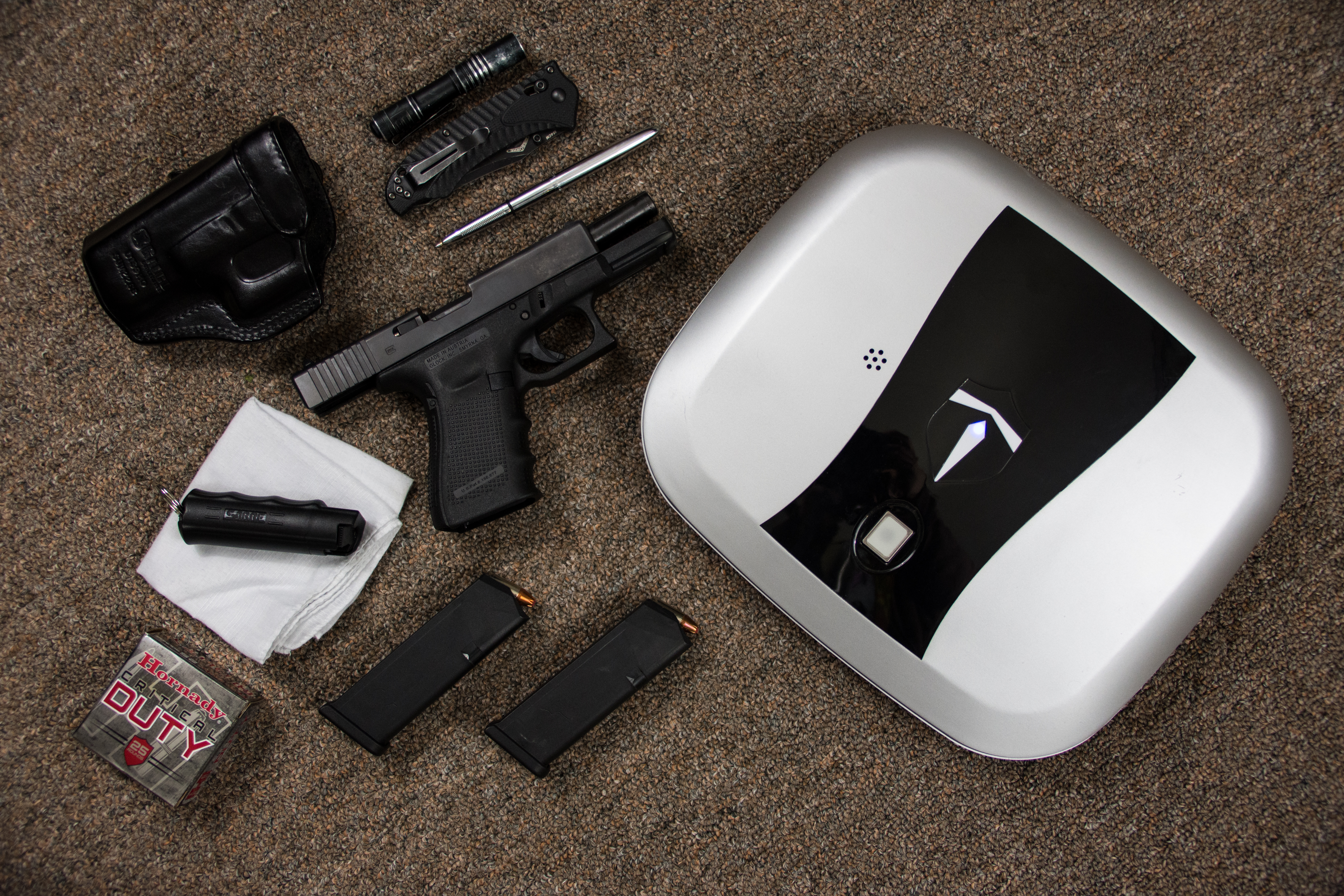
First responder infrastructure consists of much more than just a pistol or “tool of self-defense.” Photo: Matt Snyder
GET YOUR PERMIT
A Concealed Carry Permit, or in my state, a License To Carry a Firearm, is required to legally carry your firearm concealed in public. Even if you are not ready to carry concealed in public, having the permit gives you extra protection when transporting the gun to and from the gun shop, home, or range. Keep in mind that the CCW permits you to carry the firearm. It does not permit you to use the firearm.
GET YOUR GUN
Your chosen self-defense tool should be a natural fit, of a caliber you can consistently manage and be willing to practice with, and manipulate without much thought.
Caliber is also a consideration. I recommend 9mm for those who are choosing a semiauto pistol. For a long time, I was one of those “.45 guys.” One day, I realized that perhaps I was shortchanging myself. Due to the advances in bonded hollow-point technologies, 9mm performs nearly as well as .45 in ballistic gelatin. With 9mm, I can get three shots off in the time it used to take me to get two shots off with .45. I now have more ammo in the gun itself than I used to in the gun and an extra magazine. Generally speaking, 9mm is cheaper, especially practice ammo, and recoil is much easier to manage.
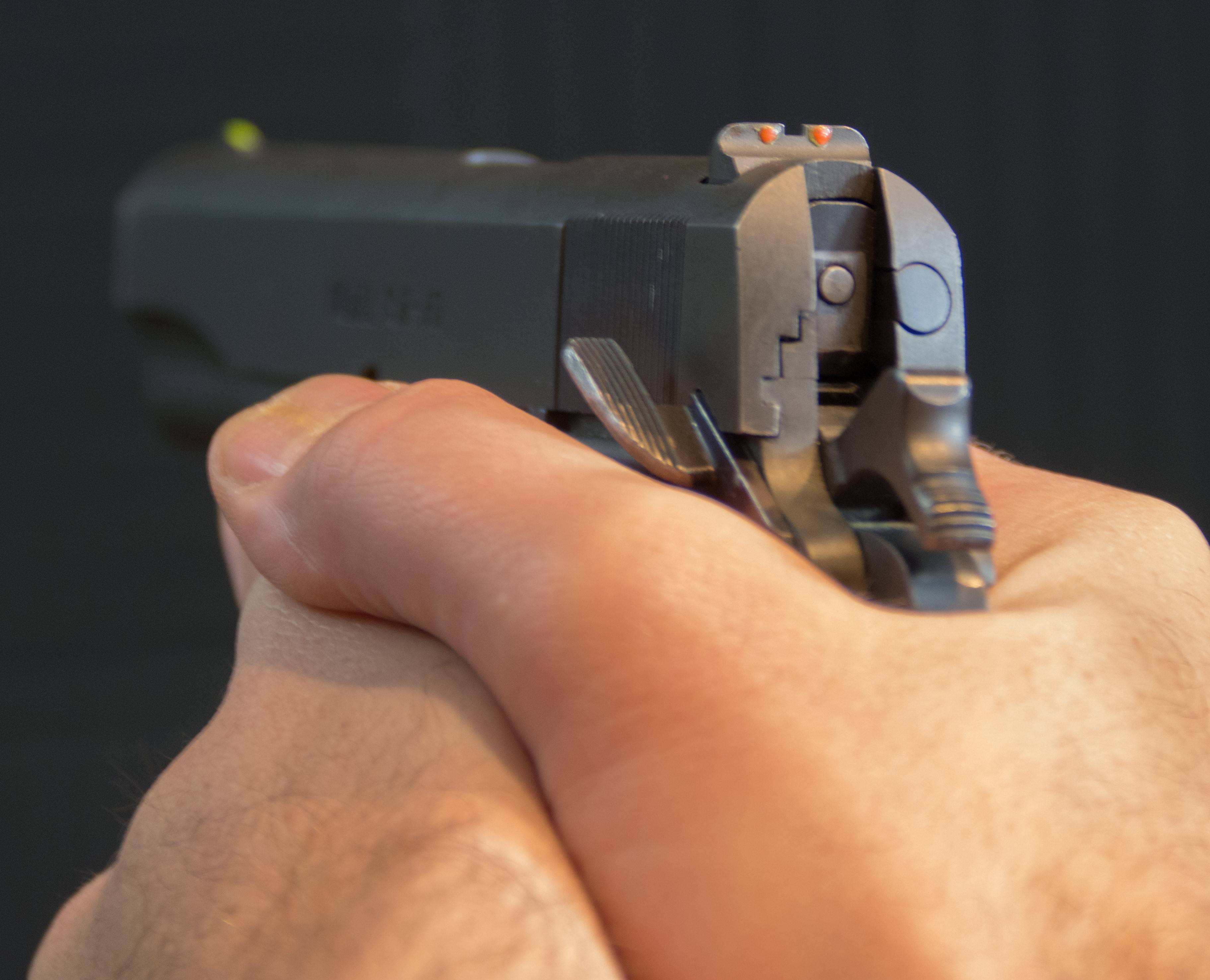
External thumb safety is one more potential fail point under the stress of a dynamic critical incident. Photo: Matt Snyder
GET YOUR HOLSTER
I do not know of one EMS service that purchases an ambulance to park it in the front yard of the station and throw a blue tarp over it when it is not in service. It is locked securely in a bay specific for that apparatus. Your tool of self-defense must be secure and the trigger must be covered at all times inside of a quality holster made specifically for that model of firearm.
I generally recommend an inside-the-waistband holster placed just behind the strong-side hip. Depending on your lifestyle, wardrobe, vocation, or mobility, you may need to choose something other than strong-side hip inside the waistband. Whatever you choose, the pistol must be secure and accessible. To test this, I suggest you safely unload your pistol, holster it, roll around on the floor, get in and out of bed, in and out of your car, up and down from the recliner in the club house at the sportsmen’s club, jog a bit, do a few jumping jacks … the pistol should remain secured. It is also important that it feels secure and comfortable. If it hurts to wear it, you won’t. If it feels like it’s going to fall out, you won’t wear it. The whole point of wearing this “tool of self defense” is to have it if you ever need it. Comfort is very important.
The holster should also remain secure while drawing your pistol. If the holster moves around during the drawstroke, you are setting yourself, or perhaps your family, up for disaster. A firefighter never runs into a burning building wearing gear that does not fit and is not secure. Remember: This pistol is life-saving equipment.
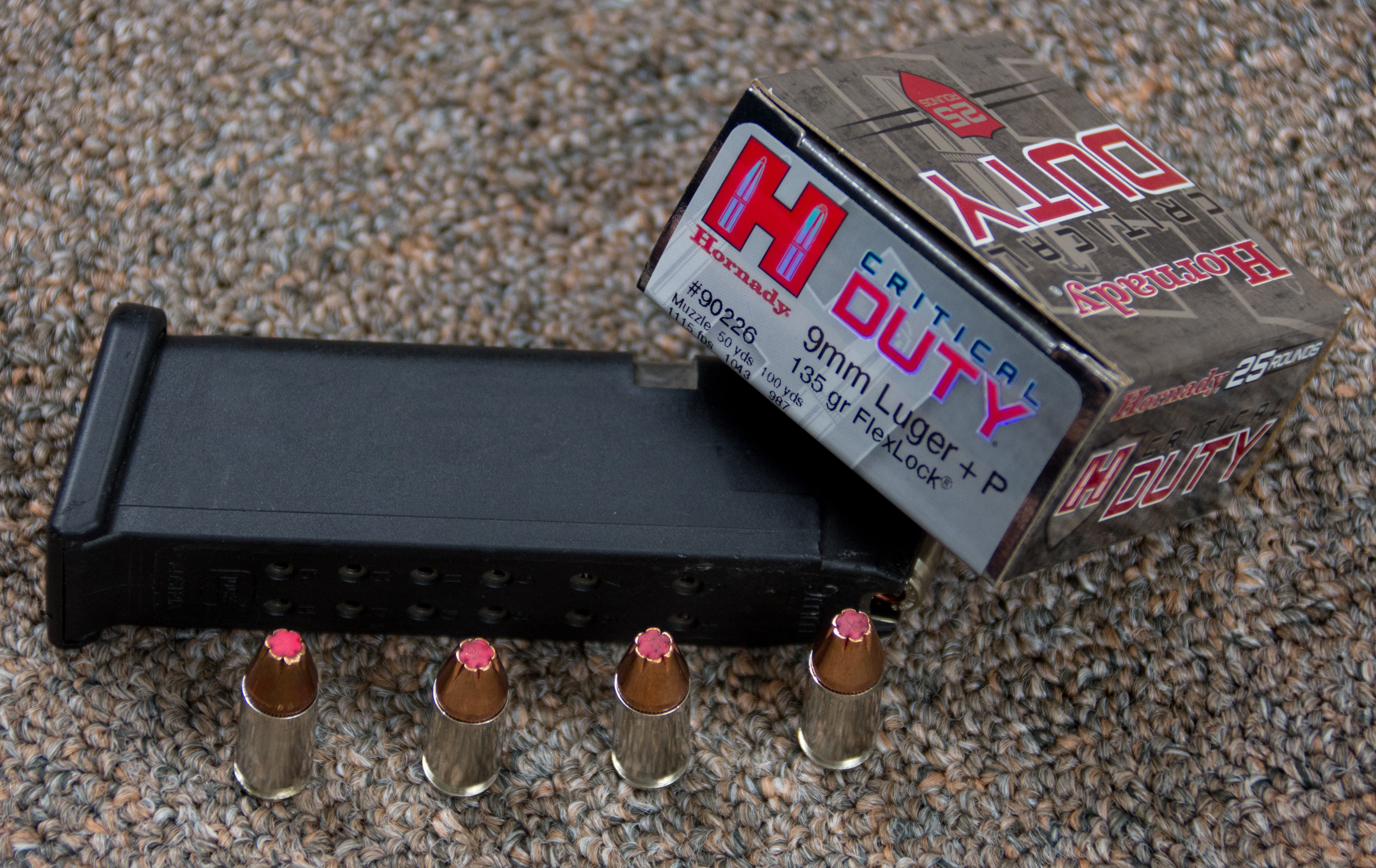
Hornady Critical Duty is just one example of a quality bonded hollow-point defensive ammunition. Photo: Matt Snyder
GET YOUR AMMO
We touched upon caliber choice earlier. Here I would like to discuss the specific type of ammunition. Find the best ammo for the job of defense. Ball or FMJ (Full Metal Jacket) ammo is great to practice with, and it will put a hole in the bad guy. But after it puts a hole in the bad guy, it may go through the bad guy and into an innocent citizen down the street. You want ammo that will do massive tissue damage to the attacker with as little overpenetration as possible.
Many police departments and ABC agencies (such as the FBI) use Speer Gold Dot. I like it a great deal if I can find it. Hornady Critical Duty is quite popular too. There are many excellent defensive ammo choices on the market. Do your research.
Make sure your gun likes to eat your defensive ammo. After you choose a brand, run a few boxes of your “rock star” ammo through your firearm to be sure it cycles. Check it on paper to be aware of how it groups. Know that your gun and ammo will perform when your life or your family’s lives depend on it. Bonded jacketed hollow-point ammo is generally your best bet.
Keep in mind that, even with proper defensive ammunition, if you miss, you are responsible for each round fired. Positively ID your target and be aware of what is behind it, in front of it, and around it. You still own the projectile after it leaves the muzzle.
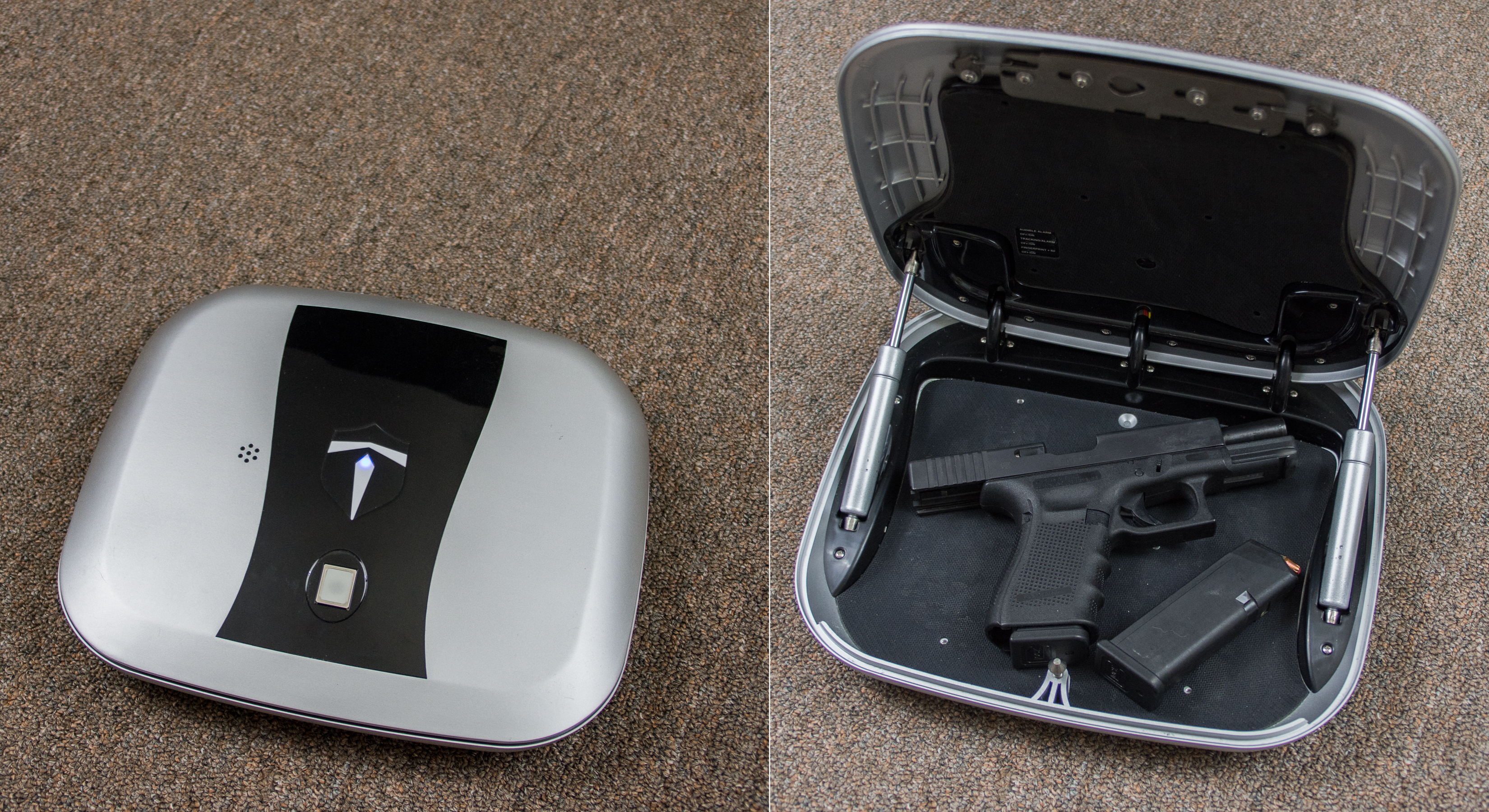
The Gun Box is a quality American-made biometric safe. The firearm is kept secure but can be accessed very quickly. Photo: Matt Snyder
GET YOUR SAFE
If the gun is not on your body, it needs to be somewhere. This piece of infrastructure is often overlooked or under-thought. A safe and secure storage device is a must for any responsible gun owner. A lockable device that can be accessed quickly under stress is a must for anyone using a firearm as a tool of self-defense.
RFID and Biometric units are very affordable. They will keep your kids’ friends and your chucklehead brother-in-law from gaining access to your pistol, and you will be more likely to access it in the dark, half asleep, without your glasses, and/or under stress. One thing to bear in mind: Gun safes will not keep your guns safe from legislators. Stay politically active, vote, and be a positive ambassador of the Second Amendment.
GET YOUR OTHER POCKETS FILLED
Accessories and other defensive tools are important and can really weigh down your pants and fill your pockets. A flashlight, extra magazine(s) or speed loaders, a blade, pepper spray, pen (tactical or otherwise), note pad, hanky, rape whistle, et al are important objects that can give you options when implementing a personal protection plan.
Flashlights make darkness go away. Extra magazines mean more ammo, more ammo means more time in the fight, and time equals life. An extra magazine also gives us more options if we experience a malfunction. Pepper spray may give us a defensive option if we find ourselves in a place where we are legally not allowed to have our firearm. A hanky can be used as a tourniquet or blood stopper, or even a place to blow your nose.
GET YOUR PLAN PLANNED
Formulate a defensive plan or strategy for every environment you find yourself in. Make a plan that is plausible, not just possible.
If you are concerned about walking in the dark parking garage at work, learn where the exits are and identify cover, concealment, and barricades. Know where the fire alarms or panic buttons are. Park as close to the entrance as possible. Stay away from the dark and shadowy areas. Travel in packs with other folks. Have security escort you. Prepare your keys before you go into the garage. Keep your strong hand empty. Have a plan for every environment. Even if you make an impromptu plan in a new environment, you are ahead of the game, because a not so well-thought-out plan is much better than no plan.
Your plan(s) should be based more on situational awareness and conflict avoidance than physical defense. When you press the trigger, your life changes. If we can avoid a confrontation, we are guaranteed to win that confrontation. When seconds count, police are minutes away. This is a hard truth, and one of the reasons we accept the responsibility of becoming our family’s first responder. But if we can buy police those minutes and let them do their job, perhaps we won’t have to press the trigger. Your defensive plans must bear this in mind.
GET YOUR SCHOOLING
People often focus on the physical, tangible hardware of their first responder infrastructure but don’t plan for a training regimen. Training, continued education, and mental preparation are musts for anyone taking on the responsibility of being their family’s first responder.
Seek out courses that emphasize conflict avoidance and situational awareness as well as defensive shooting skills. Defensive shooting skills must consider what happens to the body and mind physiologically under the stress of an ambush. Training must always be in the context of defense.
Remember that as civilians, it is above our pay grade to hunt down bad guys. Be wary of “gunfighter” classes taught by “Turbo the space shuttle door gunner” types. I certainly would not discount or disrespect anyone’s military service or downrange experience, but be sure you are not learning aggressive tactics that could land you in legal trouble or escalate a situation that you could perhaps avoid. Civilians do not have rules of engagement.
Study the physiological reactions to stress and incorporate them into your training. Why fight what the body does naturally? The physiological reactions to stress are defensive positives and are hardwired into us to help the body survive an attack. Embrace these natural reactions and train in a way that is consistent with them. The book Combat Focus Shooting by Rob Pincus explains this very well.
Adopt a training regimen that is plausible, not necessarily possible. Don’t waste your time and training resources preparing for a zombie invasion. Train for the 10-foot low-light encounter in the middle of the night as you defend your safe room or the attempted carjacking from the front seat of your car while drawing with the seatbelt on. These scenarios are much more plausible than the army of darkness invading your town with AKs.
Learn about the legalities and consequences of use of force. Become a student of your local and state laws. Read articles, attend legal seminars, and consult an attorney.
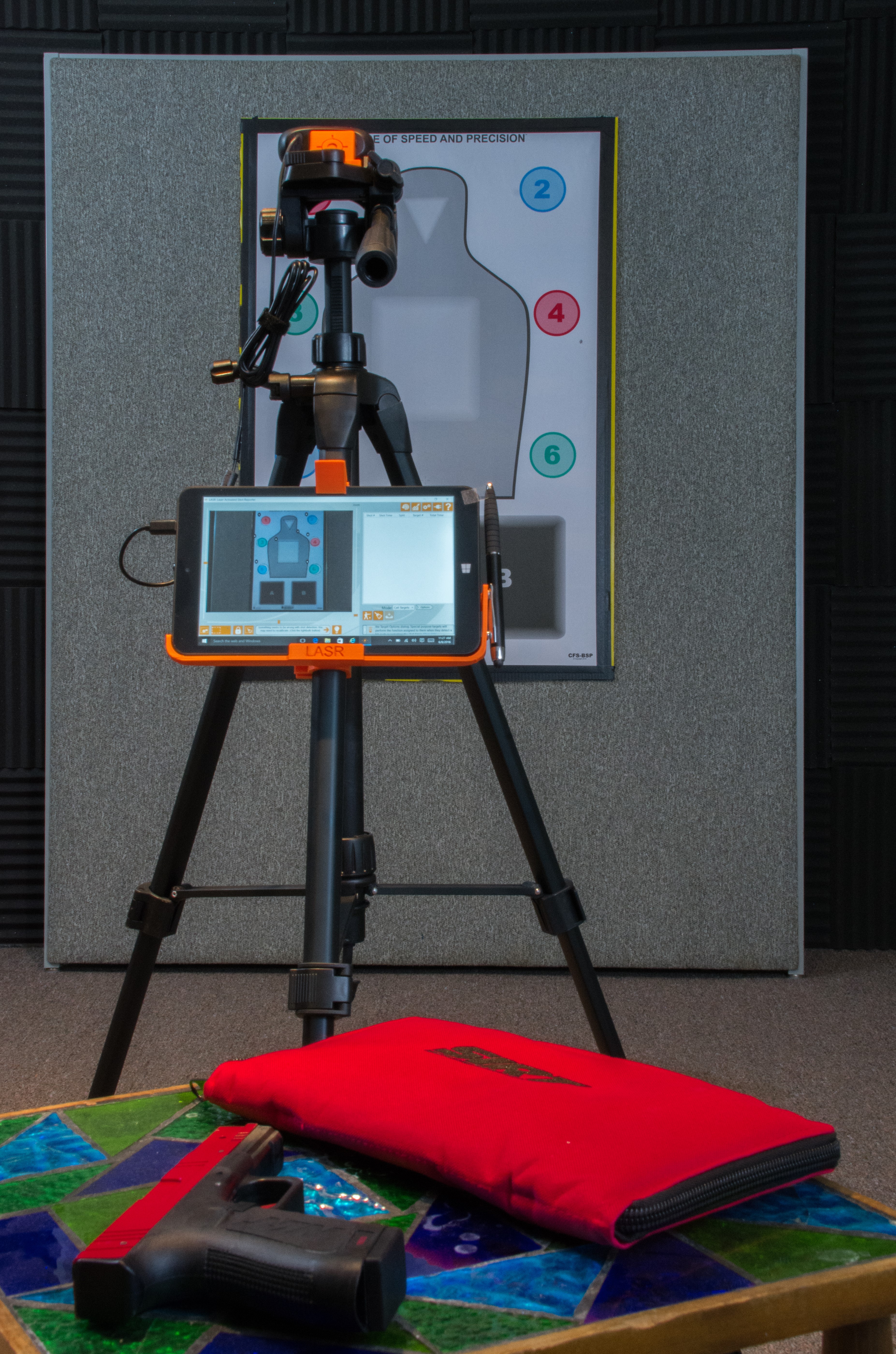
Simulated training devices such as SIRT pistol and L.A.S.R. software are excellent tools to supplement live-fire practice. Photo: Matt Snyder
Implement a well-balanced diet of training. Live-fire training is essential, but add safe dry fire, laser training devices such as SIRT pistols, mental conditioning, a good video on PDN, and a relevant article and you can train every day! Professionals train every day — so should you. Your life or the lives of your family members may someday depend on it.
GET YOUR LEGAL TEAM IN PLACE
If you are forced to defend yourself against an attacker, you will most certainly need to defend yourself in some sort of legal aftermath. You were attacked and you are alive because you exercised your Second Amendment rights. Now you must exercise your Fourth, Fifth and Sixth Amendment rights. Keep your mouth shut and have your lawyer do the talking.
Consider joining one of the fine membership organizations that help you “lawyer up” after a defensive encounter. It will help you with the legal and financial aftermath by offering bail, legal, and financial support. If you choose not to join such an organization, find and contact a pro-Second Amendment criminal defense attorney. Do this now! Tape their contact information to your carry permit and program their number into your cell phone. You do not want to find yourself in a jail cell leafing through the Yellow Pages looking for legal representation.
GET YOUR FAMILY ON BOARD
Have a candid discussion with your family about your personal protection plans. Don’t let denial kill you — live in reality and help your family understand the necessity of your decision to take on the responsibility as their first responder. Make sure each family member knows what to do if there is a defensive emergency. Do they know what to do during a dynamic critical incident? Do they know where the safe room at home is? Do you have a code word that, when said in public, everyone drops what they are doing without question and leaves the area? Do they know what to do after a dynamic critical incident? Are they prepared to see you cuffed and put into a police car after you defend them? Do they know that they need to keep their mouths shut too? Are they able to help with the plan? Just like any responsible person reviews a fire prevention and escape plan, personal and home defense plans should be explained, discussed, and practiced.
GET STARTED!
Personal and home security are not convenient. Taking on the responsibility of being your family’s first responder requires dedication. You must dedicate time, money, resources, and perhaps sweat and tears. Take the job seriously and approach it as a professional, because you and your family’s lives may someday depend on it.
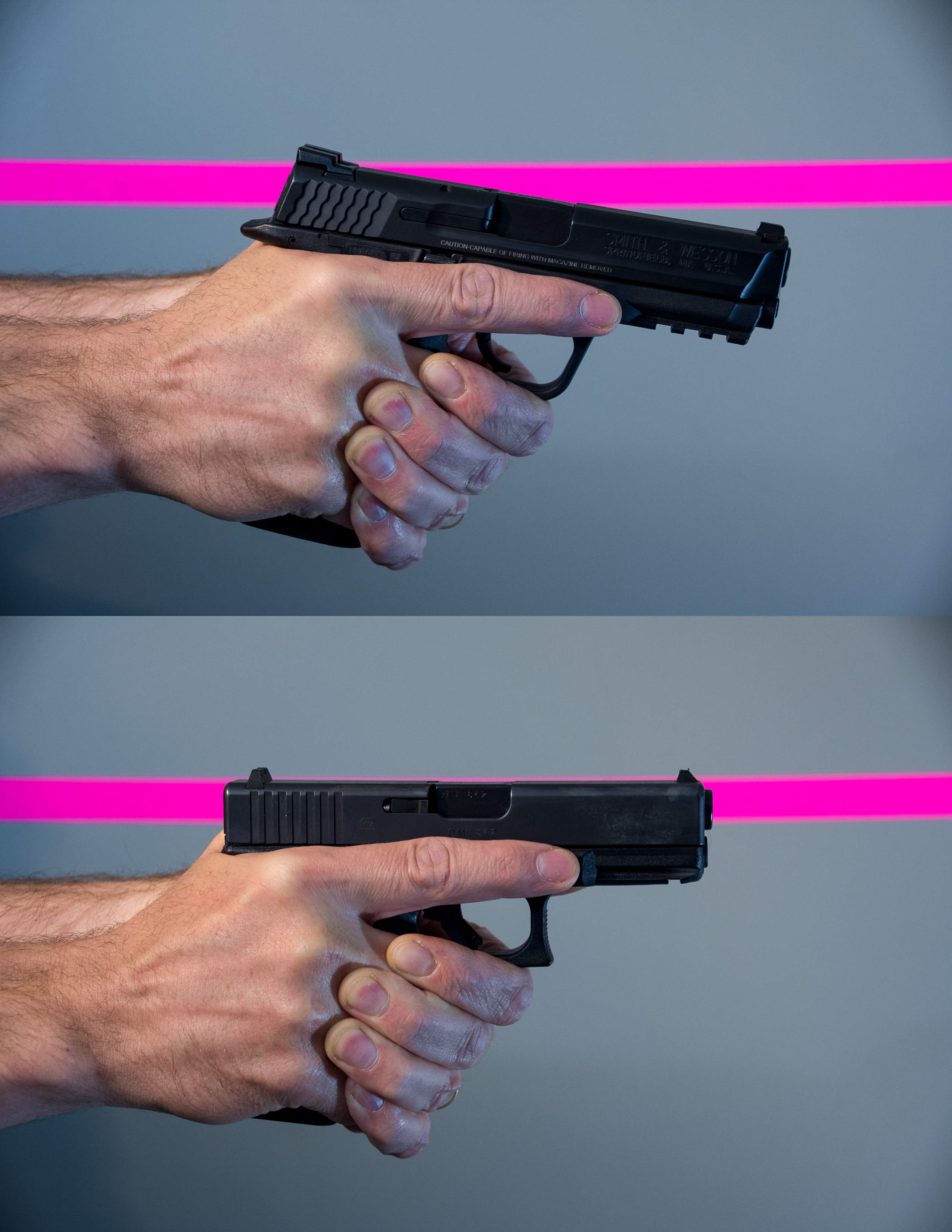
Some very good "food(s) for thought" in this article.
Great article! It has helped me look at my defensive plan and setup with an eye to making it much better. Thanks.
Nicely lays out the basics. CPR & Stop the bleed need to be the next steps, EMS in many cases is going to wait for LE to clear them in, so being able to take care of yours and yourself is vital.
I am grateful for your advice
Hi, great article now for the $0000.64 question I currently have a glock 17 for home defense and was thinking to switch to an AR Pistol or a Hi- Tech 9mm carbine hornady makes defensive round for both. Or stick with glock?
Very sound advice
Your commitment to informing the everyday person on the impact training is very much appreciated by myself and I know many others! I am a retired officer an I tell you now there is never enough. Please keep up all your work , till another time, be safe , stay smart, and GOD BLESS !!!!?
Outstanding presentation! I am very glad I took the time to read through the entire posting.
Thank you for a very good and informative article. Please keep them coming. Don C. Phillips Ltc USA Ret
I just joined today, this happened to be the first article I decided to read. I am glad I did, as I come from a military Marine Corps. background and family, even my grandmother was a Marine, and my entire family having their conceal and carry when I was growing up. I had a decent grip on things to keep in my head, but the twist came when I met my fiancée who had no firearms background. Installing a biometric safe under her seat for the occasions she would be going to pick up the kids from school, etc. Bolting it to the car so it wasn't something that could be removed. Quick access within the house to all the firearms yet maintaining a safe storage region for the kids safety. We invested in the mountable shelves with specific key card opening mechanism. They look like ordinary shelves, have family photos on them. But hold our firearms, we also have the easy access trigger locks in place, but our kids know firearms and don't touch, but better safe then sorry when little Suzy's friends come over. (No my daughter is not named little Suzy," The shelf release safes are nice for my AR-15 as well. The 5.56 round providing a strong backup to a multiple persons B&E Threat. My daughter does have a tactical strobe capable flashlight to disorient an invader while running to our room if needed. Nothing with a sharp edge, could be used as a decent weighted club like device. As I am one who is going into a career that could lead into the FBI or other Alphabet LEO agencies, training is something I take extremely vital. Also, with a background in Tactical Medic situations, I keep a well equipped med kit with Celox clotting powder, pressure bandages, and just about everything anyone could need medically from stitches to clamps to stop an arterial bleed, and tourniquets designed for easy self administration. I think that a medical kit, is extremely beneficial. I perform in NSSF competitions, and as I was trained by my stepfather, and grandfather as a long distance marksman (Recently made my first full Mile shot) I enjoy the sporting aspect as well. In relation to advocacy of 2nd Amendment rights, I am currently working with a local University and my own university on starting a Collegiate shooting sports team. I think the experience of competitive shooting leads to creating a broader amount of younger Competitive shooters, and more individuals who understand why 2nd amendment advocacy is pivotal to holding onto our "Republics" - Quazi democracy. (True democracy would mean every citizens vote is counted, not the electoral college system. Constitutional rights. I really think this is a great source for people with the understanding of protecting the family. Being that Family first responder, however in our region with low volunteer EMS services, I find myself as my local first responder source for medical assistance. As I have had EMS training, and keep my training up to date. As one of the only people in my small town of 400 some, very few have their conceal and carry. I used to get looks for carrying my firearm on me, now the communitee has come to see me as the guy who they can call for quick first responder care while waiting for the ambulance. I find being it extremely beneficial to the cause by demonstrating positive citizenship. My 2cents, feel free to correct any of my thoughts as I am open minded. Very glad I became a full member. Everyone here seems well knowledged and not consistently riddling off the zombie apocalypse zone.